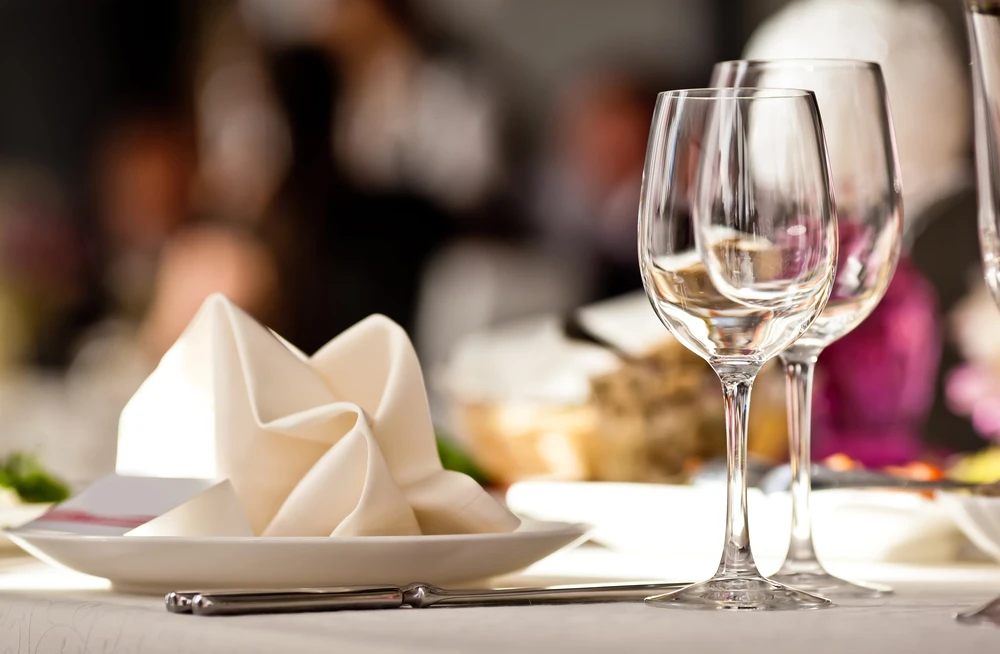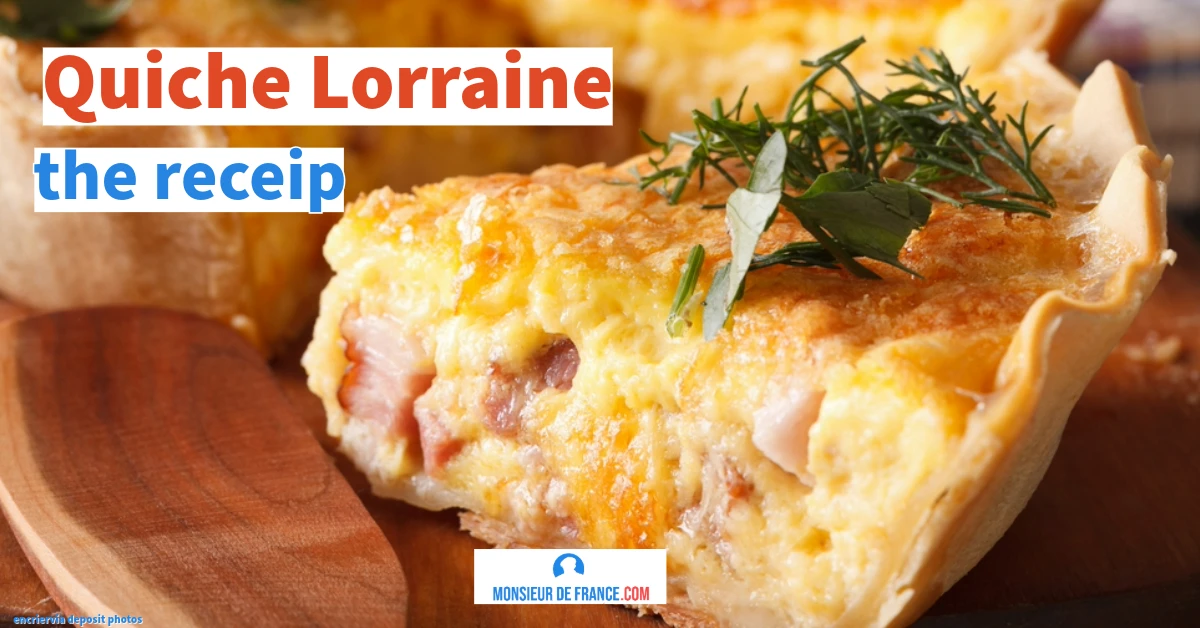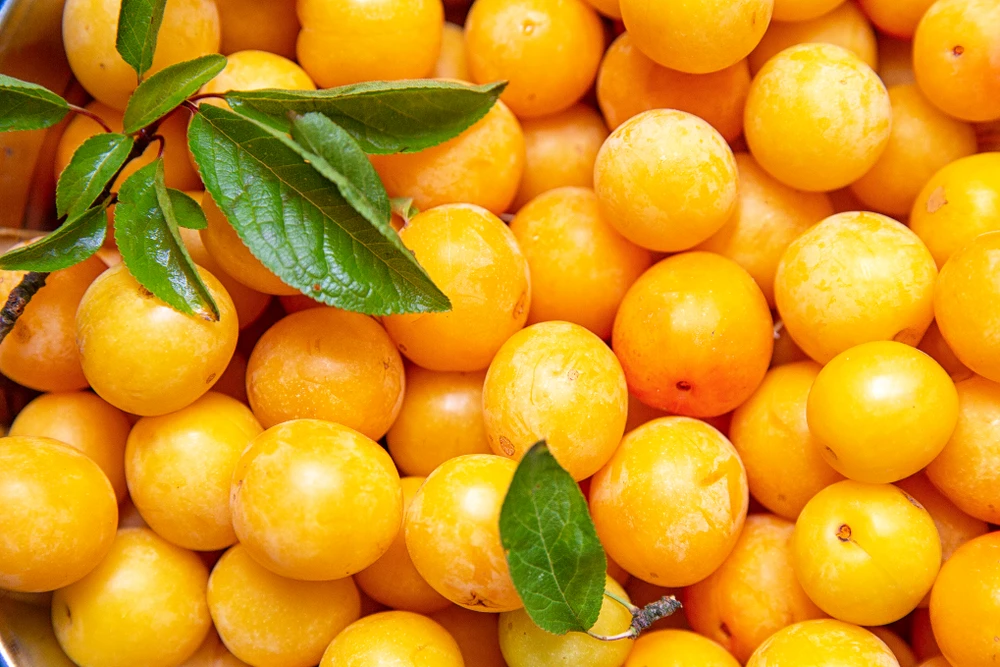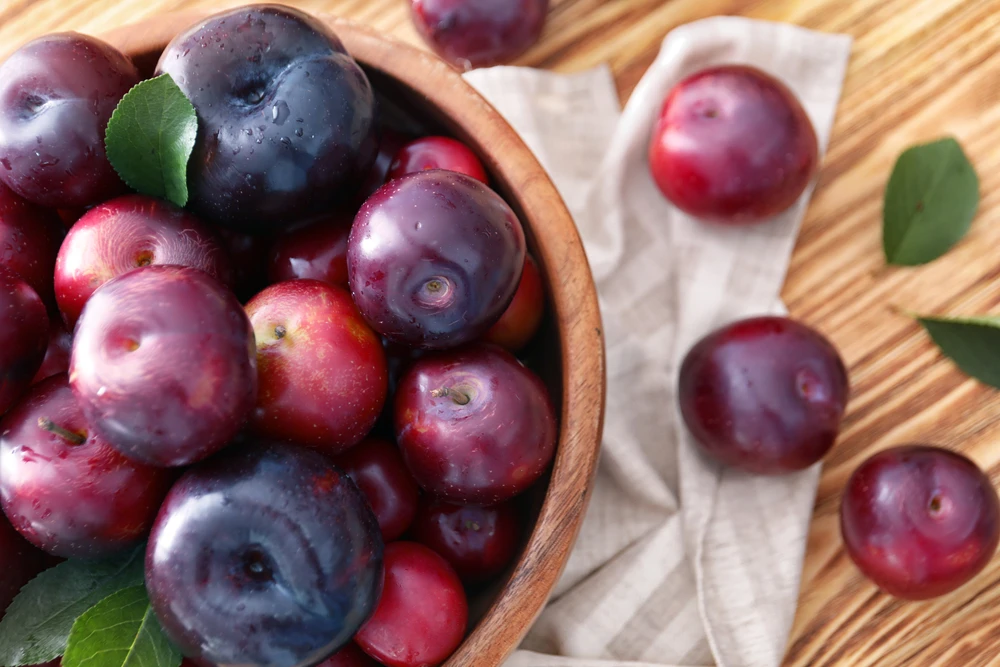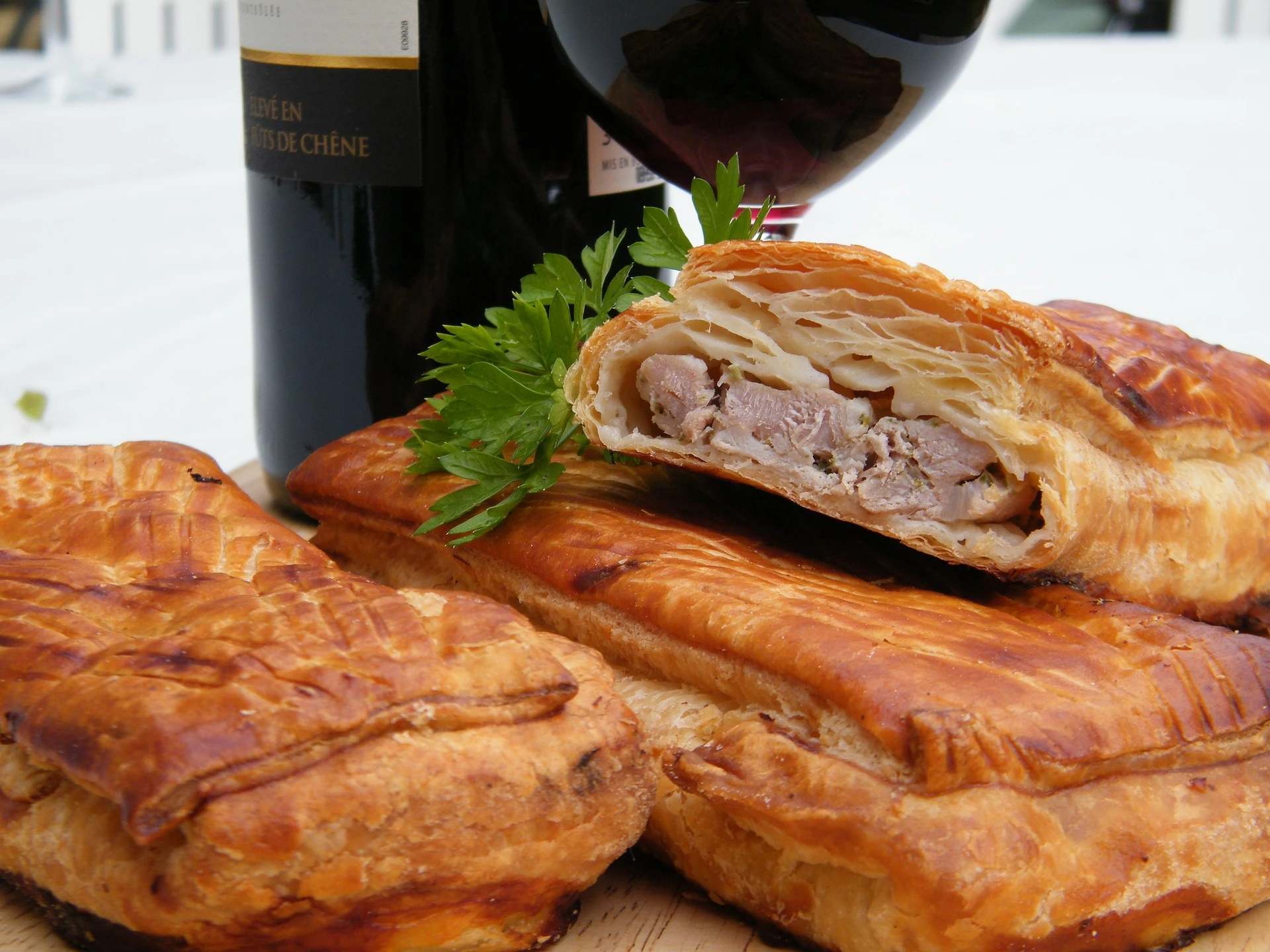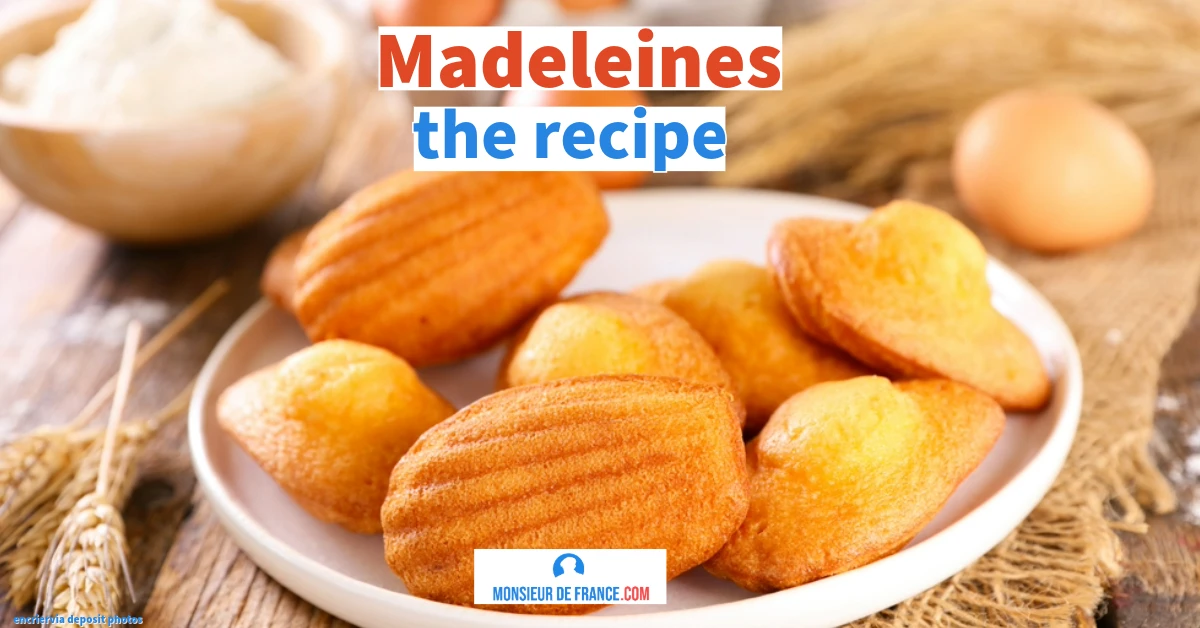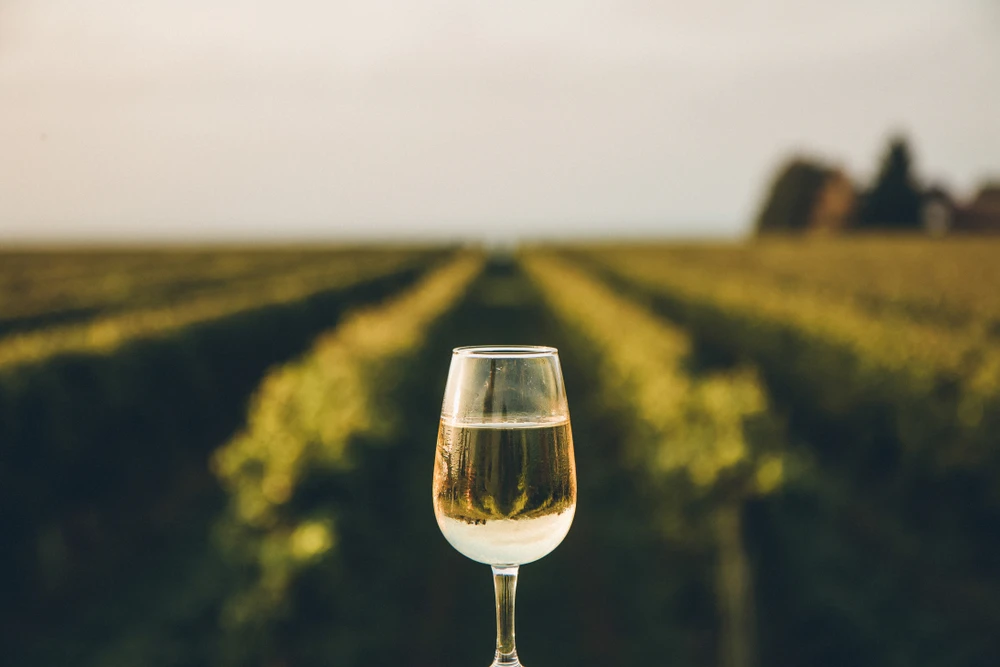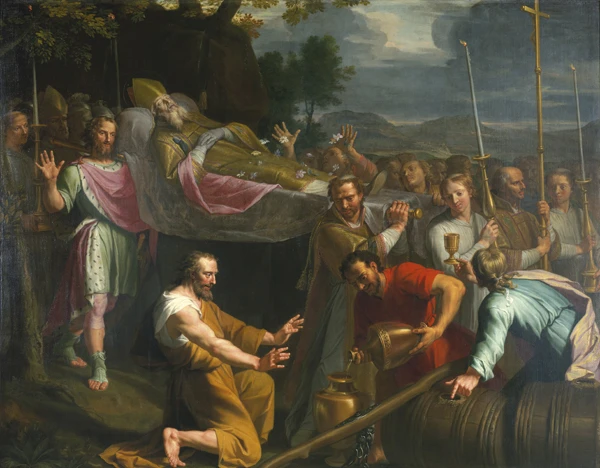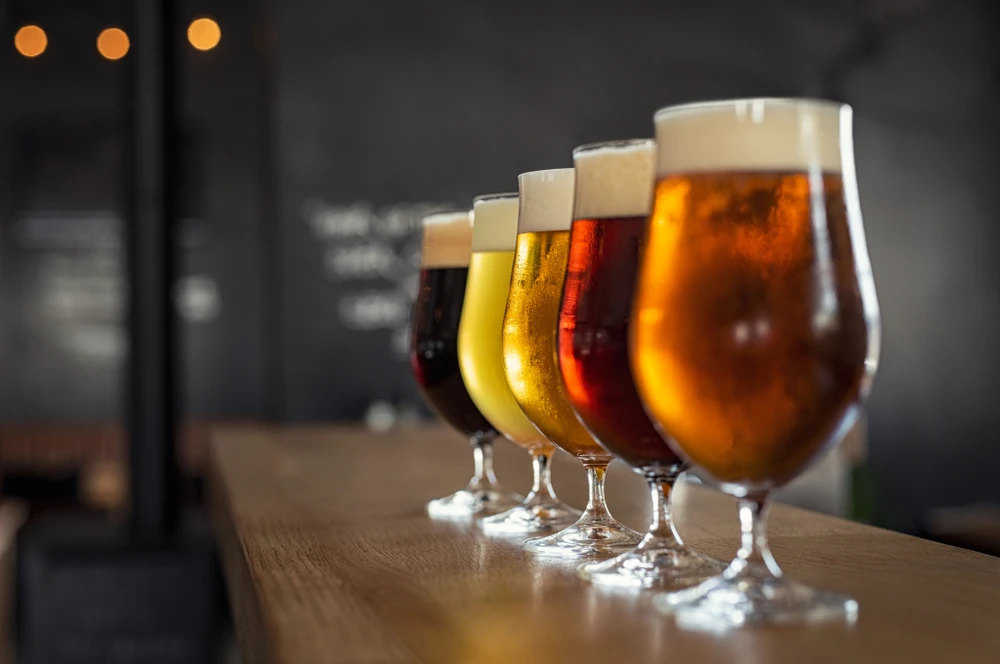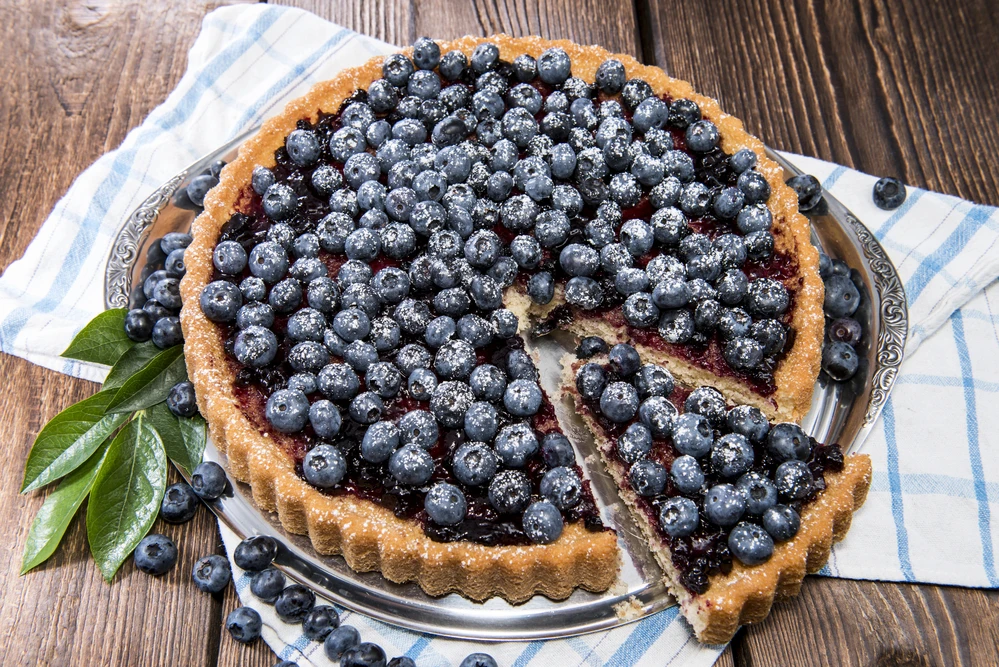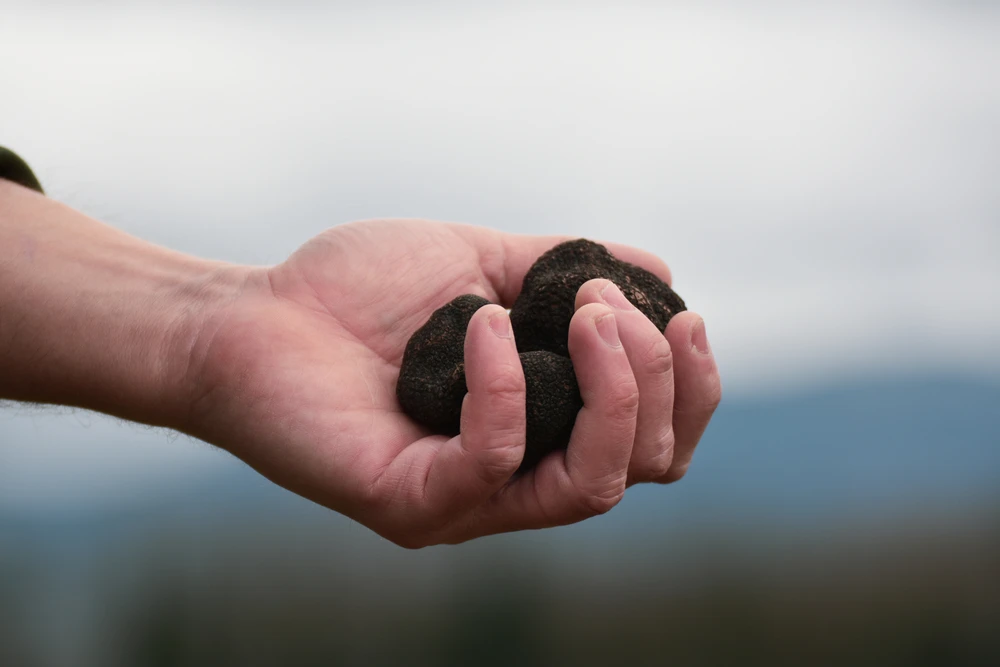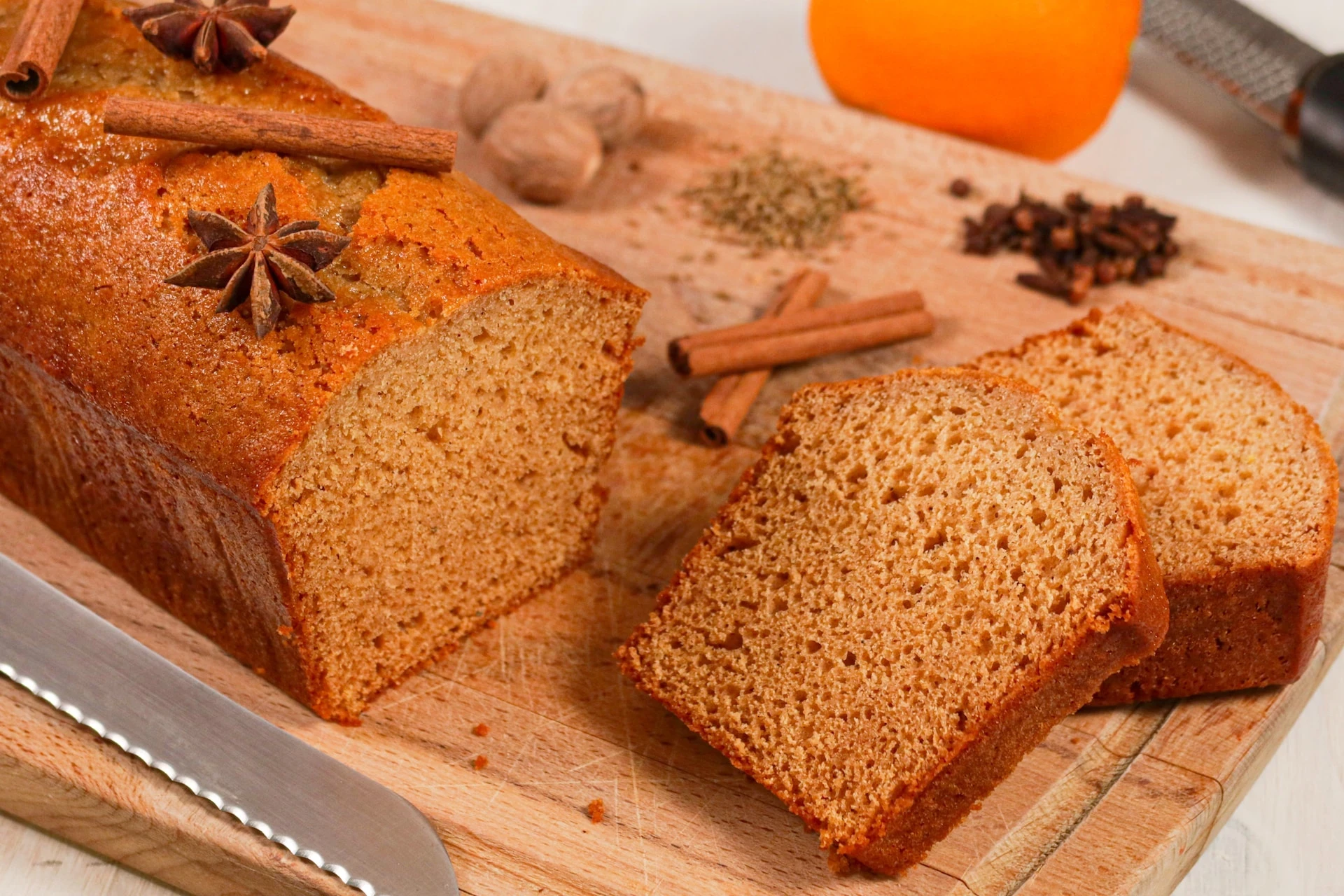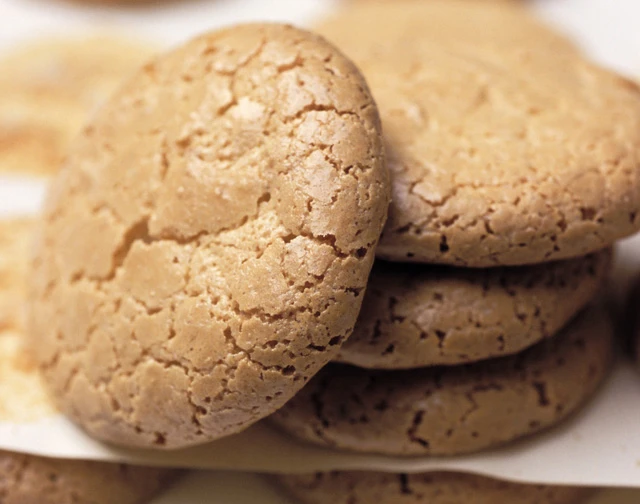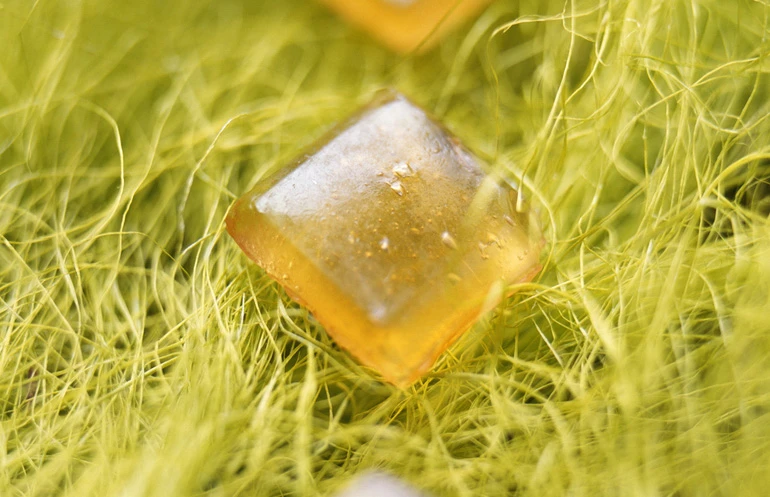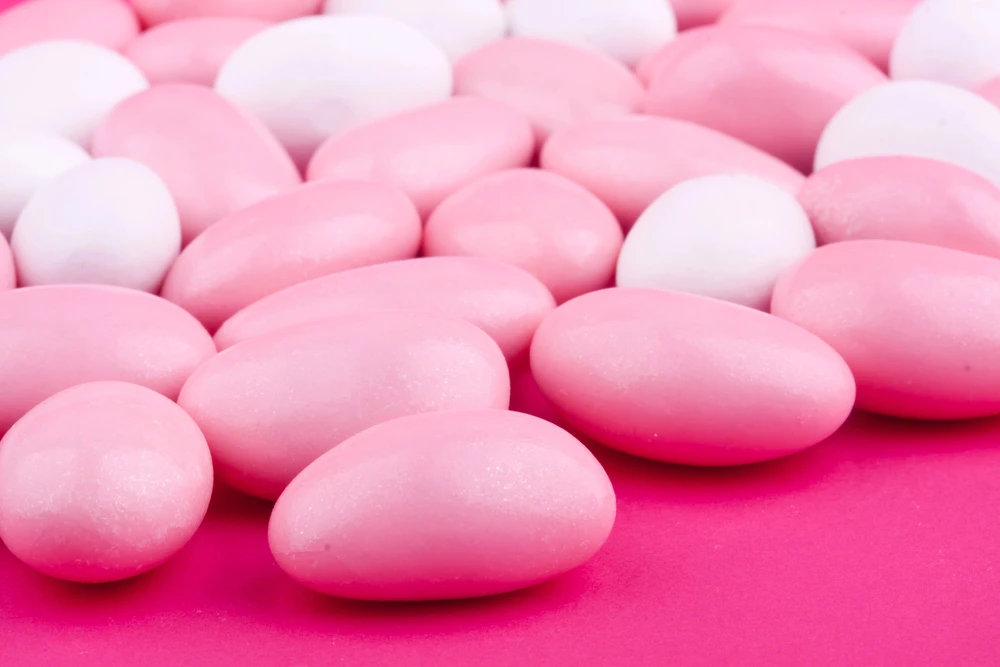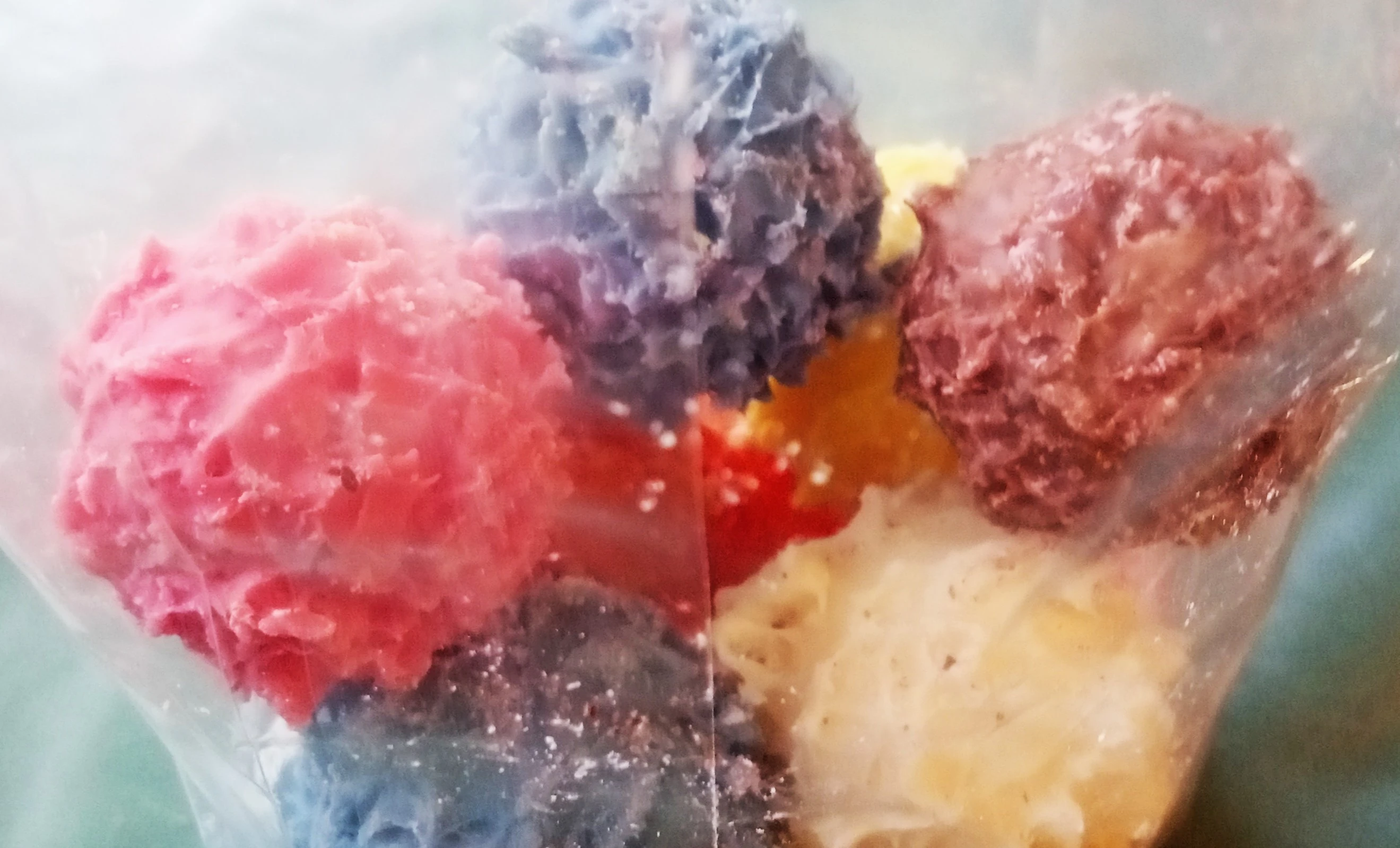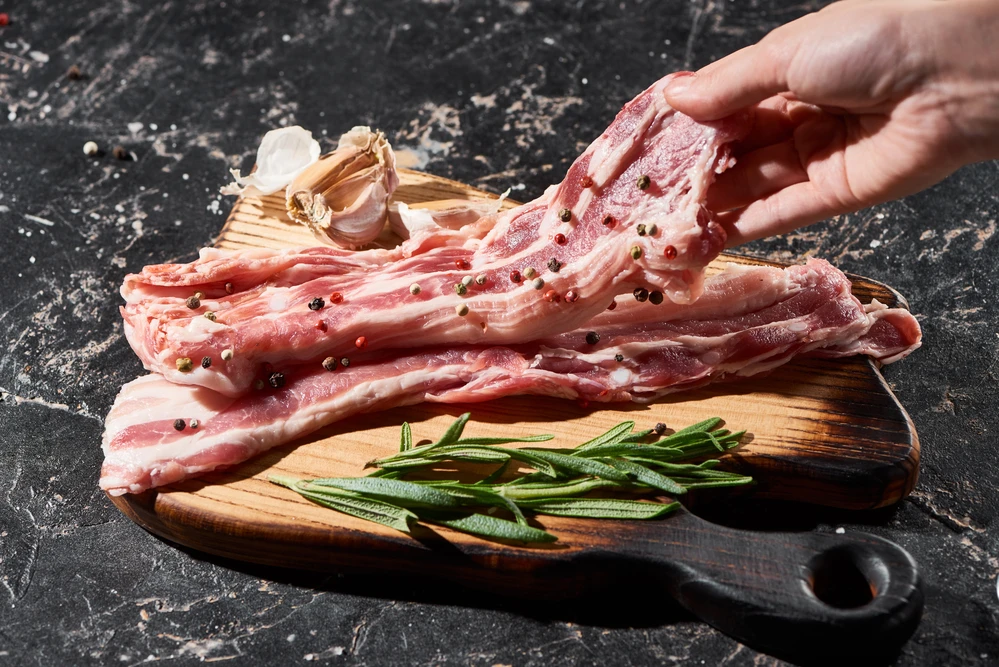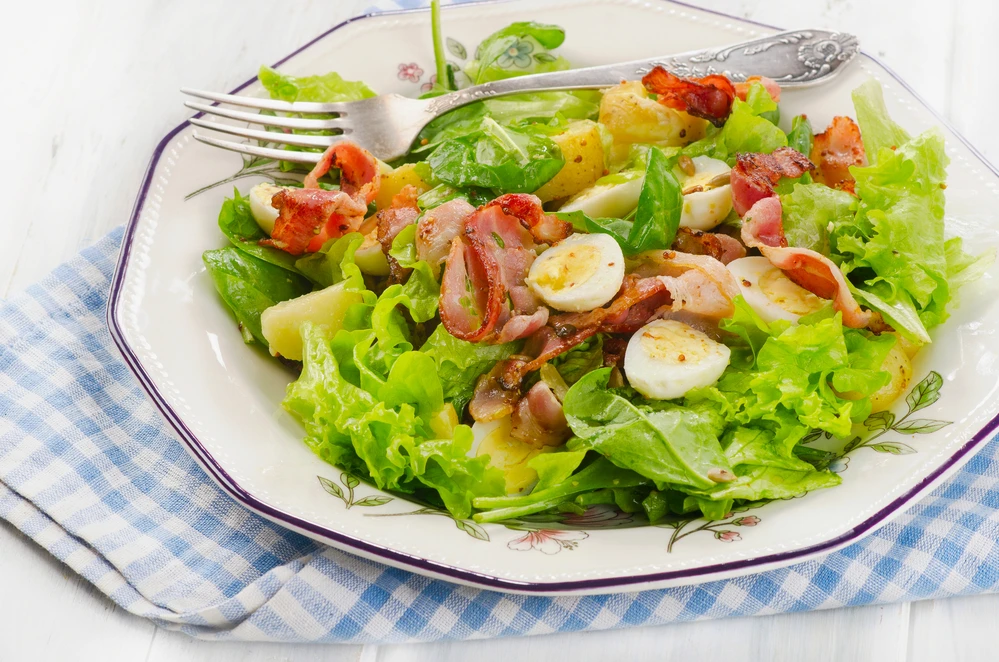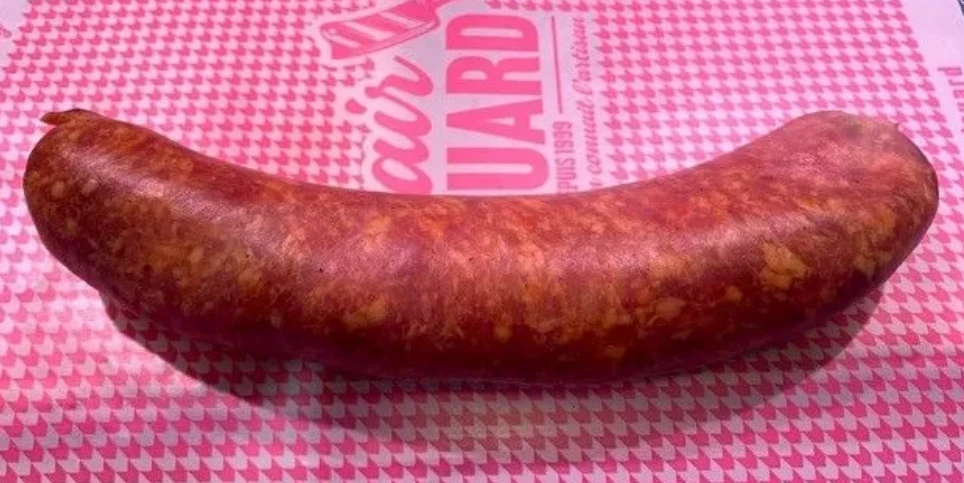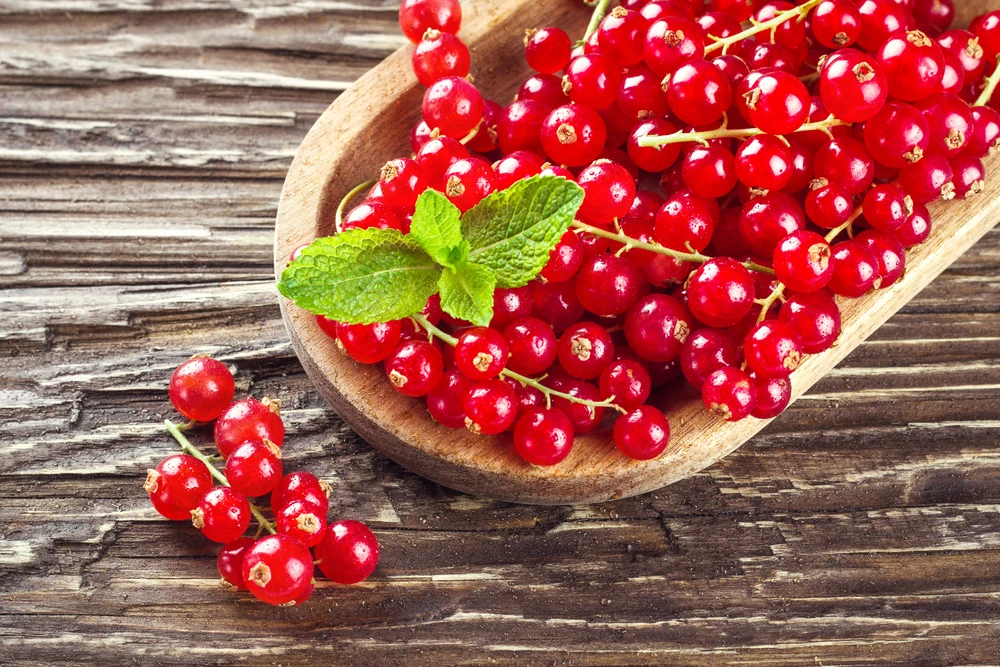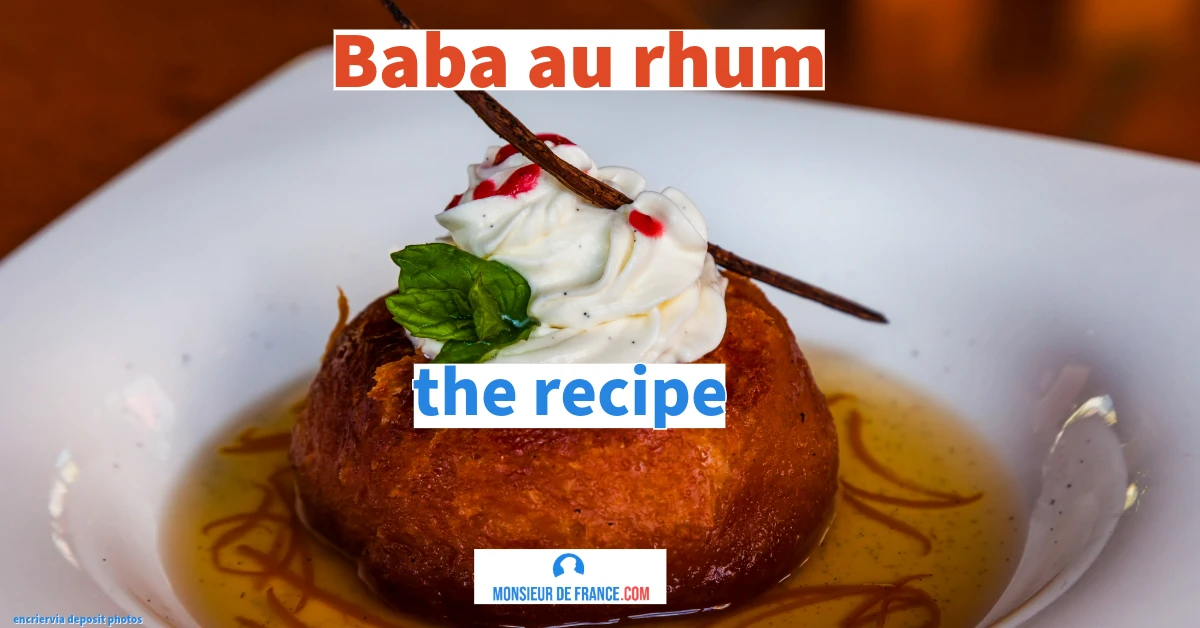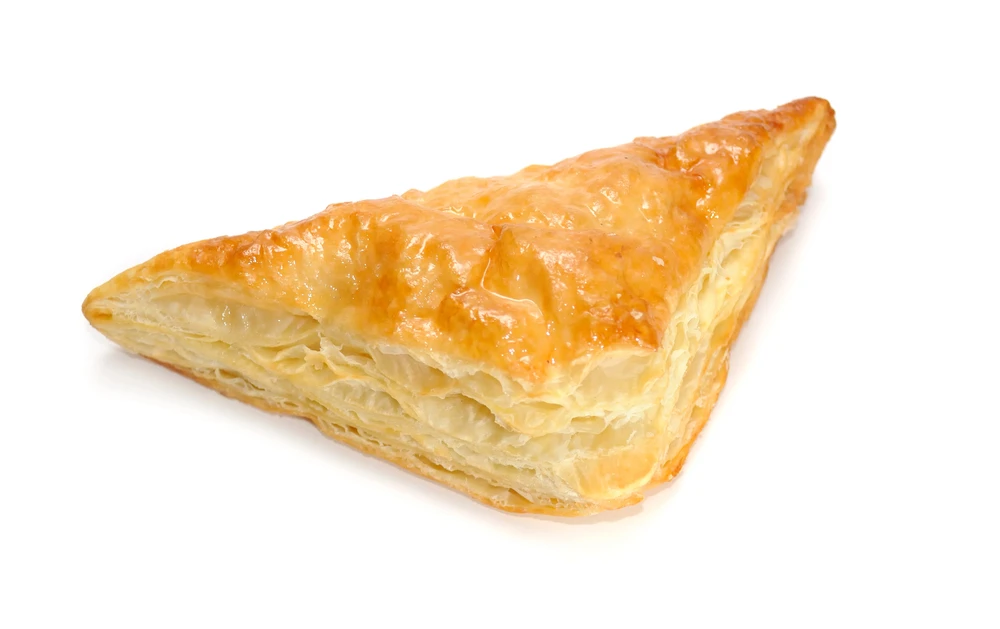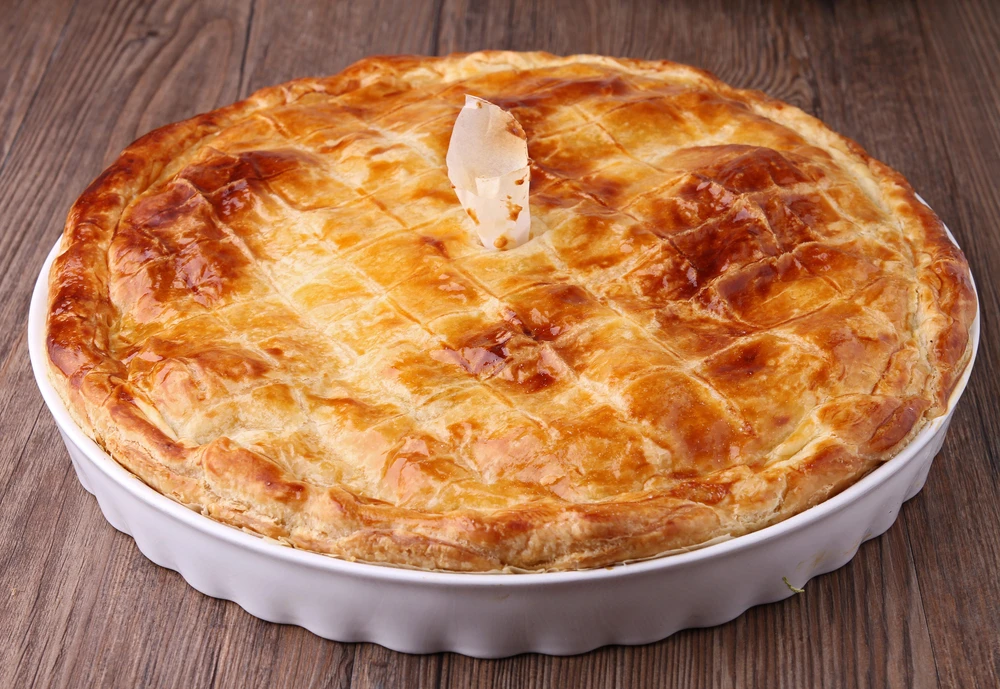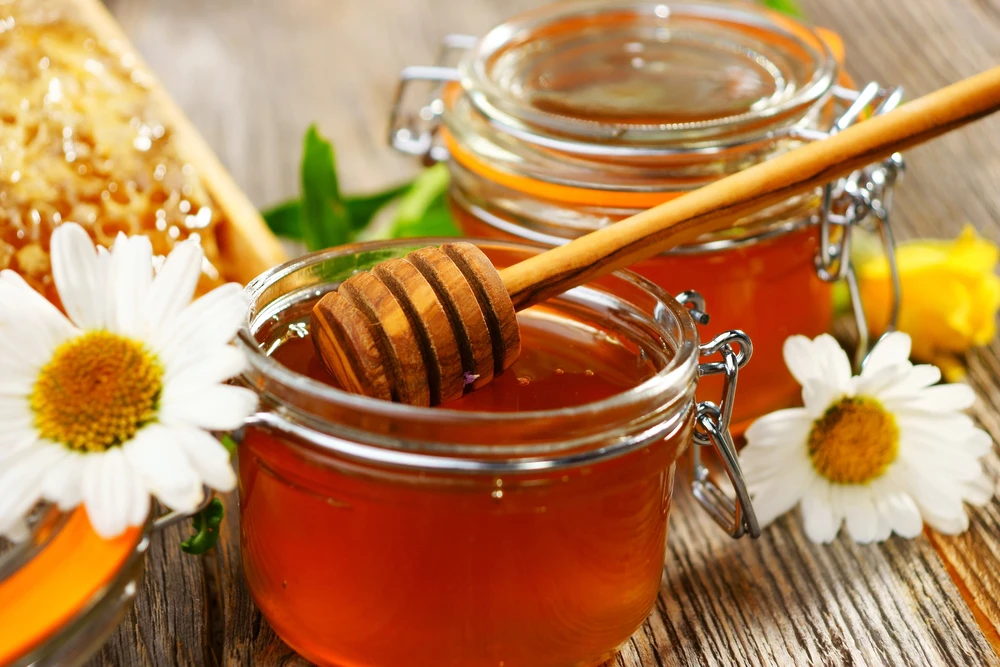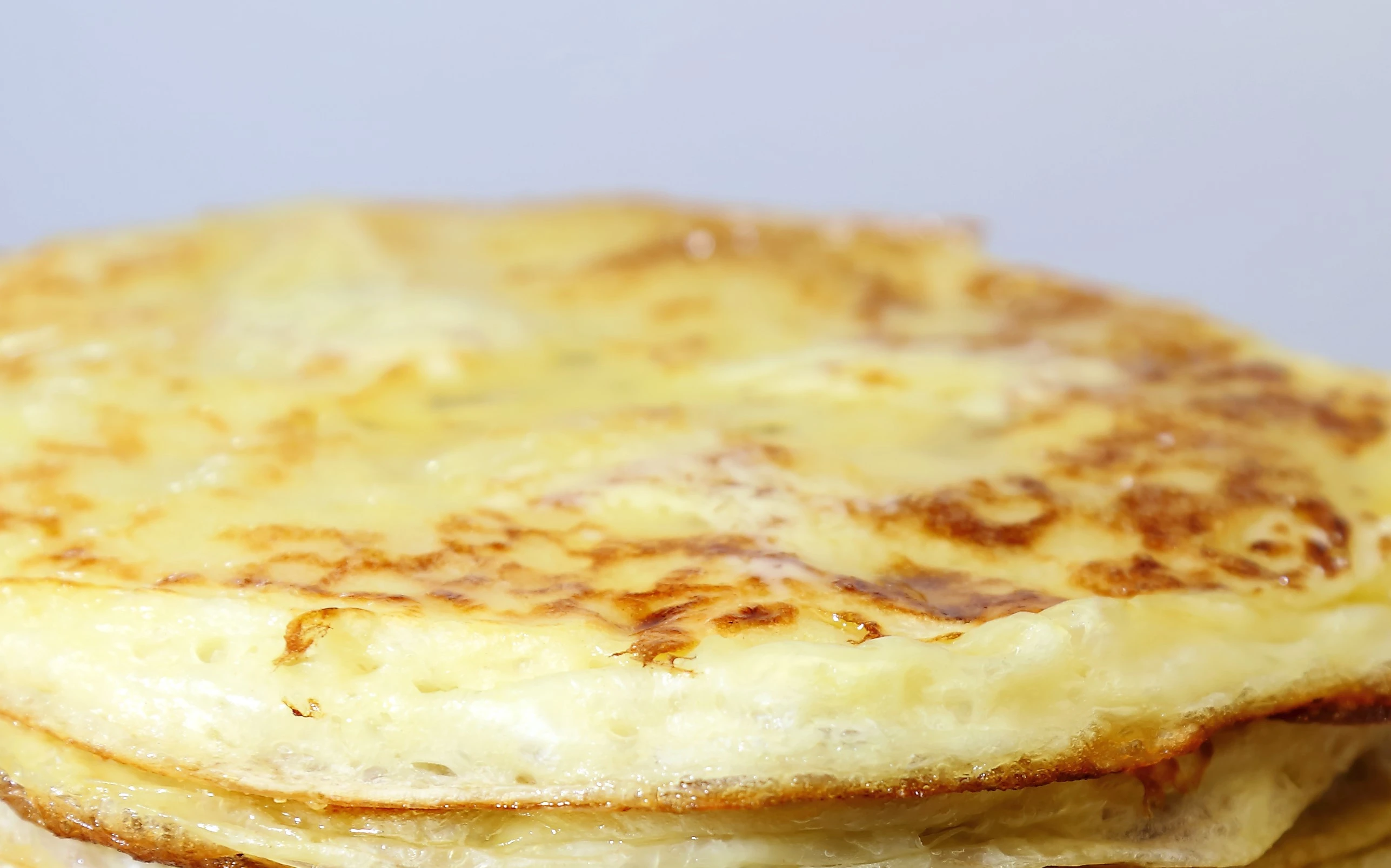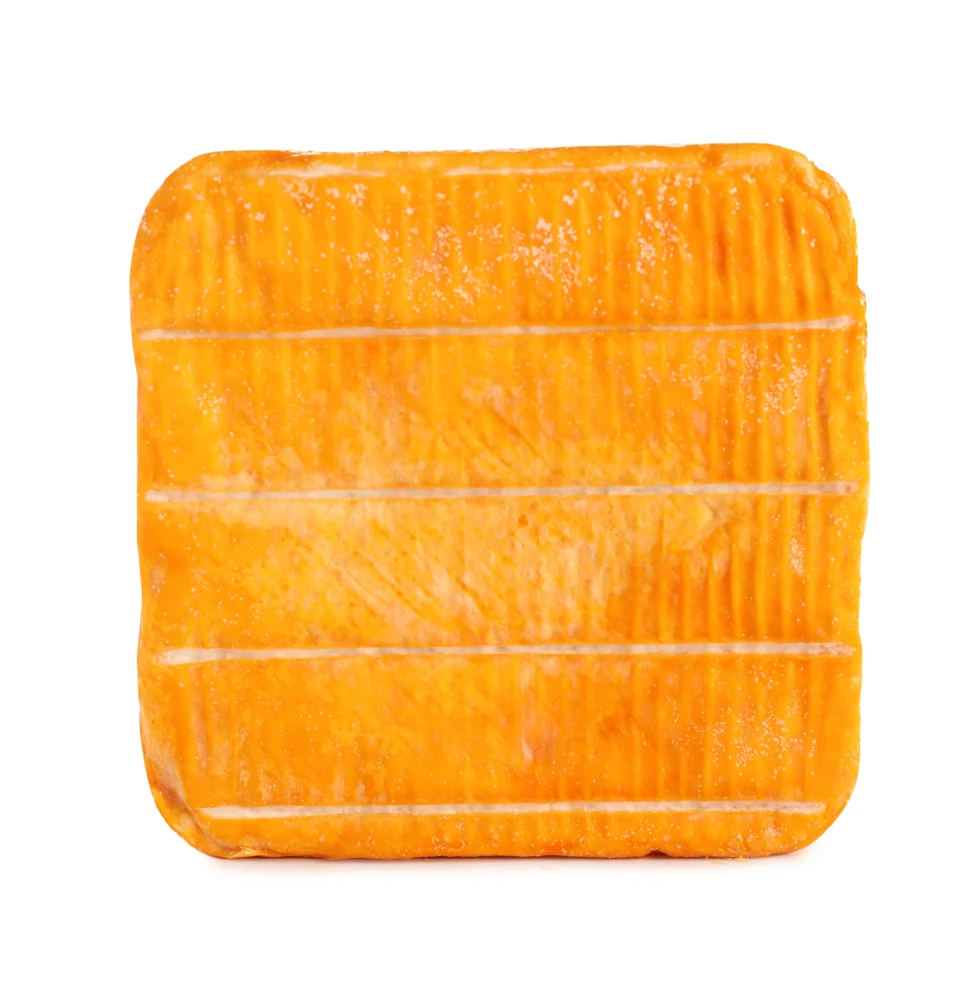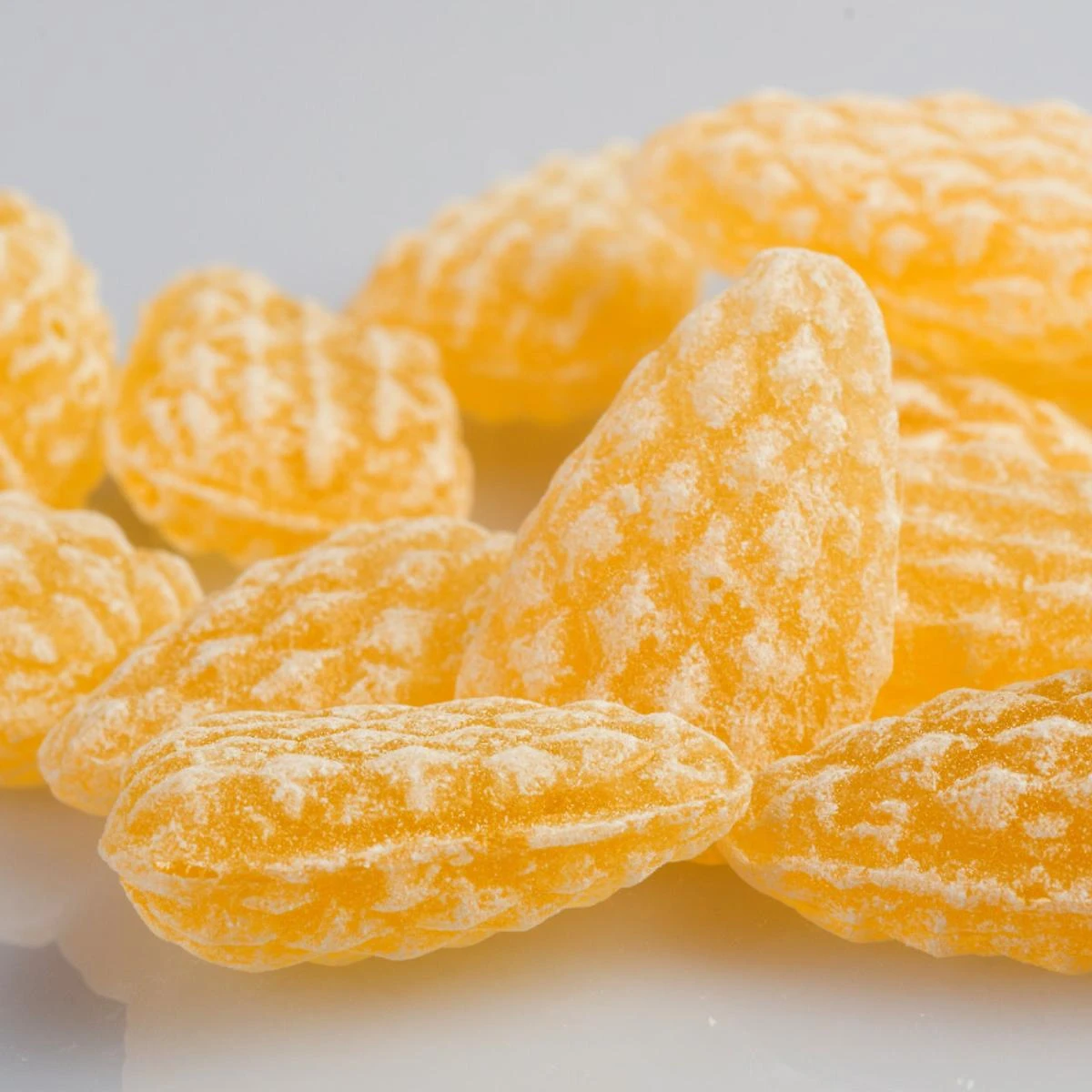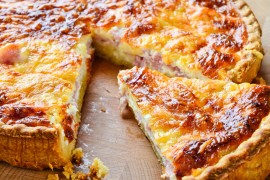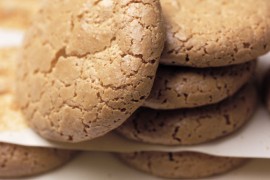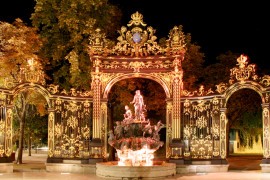Summary of the 30 Gourmet Treasures of Lorraine
1 Quiche Lorraine: the one and only (without cheese!)
There's nothing like a good quiche Lorraine. Eggs, bacon, a little cream, good shortcrust pastry, and above all, no cheese. The thicker it is, the better it tastes! You'll find the recipe below. Quiche is, apparently, the second most popular takeaway dish in the world. This is not surprising, especially since you can vary the flavors and switch from quiche Lorraine to quiche with salmon, leeks, etc. Some people even make sweet quiches like clafoutis with cherries, mirabelle plums, etc.
What's the secret to making a perfect Quiche Lorraine?
The trick is to always add one or two extra egg yolks to make it richer, and not to use only milk—cream is important.
The authentic recipe for quiche Lorraine is here.
2 The Mirabelle plum of Lorraine: the yellow gold of our orchards
Nothing is more delicious than this small yellow plum with red spots, which often has a light bloom, a kind of fine dusting, indicating its freshness. Lorraine is the world's leading producer of mirabelle plums. The season is short: from early August to late September, depending on the year. Probably brought from Provence in the luggage of King René I, who was Duke of Lorraine but also Count of Provence, it thrived so well in the region that it eventually became its sweet emblem. There are several varieties of mirabelle plum, including two main ones: the Nancy mirabelle (the largest, ideal for pies) and the Metz mirabelle, which is smaller and often used to make mirabelle plum liqueur. Nothing beats a good pie! But they can also be eaten fresh, in clafoutis, in ice cream...
Golden brown, we always fall for mirabelle plums at the end of summer in Lorraine. Photo chosen by Monsieur de France: Shutterstock
The damson plum: the other plum that is too often overlooked
While mirabelle plums are famous throughout the world, Lorraine is also the land of damson plums. They arrive a little after their golden counterparts and can be enjoyed in pies or jams in the fall. During the Renaissance, a duchess of Lorraine would not let anyone else make her damson plum jams. She loved them (and rightly so, they are delicious). Plums are plentiful in Lorraine, and a conservatory in Meuse preserves the different varieties. If you want to try your hand at making jam, I've found some tips from my grandmother Simone.
Just ripe plums! Photo selected by monsieurdefrance.com: belchonock via depositphotos
3 Pâté Lorrain: the secret treasure of the Lorraine region, marinated in grey wine
It is much less famous than its salty big sister, quiche Lorraine, but pâté Lorraine is delicious. It is very old, as it was already mentioned in the 13th century in the "Traité du Viandier" by the famous chef Taillevent. This "little pâté" is a very Lorraine delicacy that workers like to enjoy in the morning before or after work, that you can enjoy when you're feeling peckish, and that can make a good, uncomplicated meal for Sunday when you have the family version accompanied by a nice green salad. A Lorraine pâté is made from pork loin and veal, coarsely minced and marinated with shallots and a few herbs (not too many!) such as thyme or bay leaf. Then everything is marinated in white wine (preferably Toul wine, but you can also use a dry white wine from Alsace) and the meat is placed between two layers of puff pastry. If you want to eat it hot, bake it in the oven at 160-180°C for 20 minutes. Note that there is a pâté Lorrain from Chatenois whose interior is also filled with migaine.
A small Lorraine pâté is a delicious snack to enjoy on the go. Photo selected by monsieurdefrance.com: Shutterstock.
How do you enjoy a pâté Lorrain?
It can be enjoyed cold or hot. It is best served warm. It goes divinely with a little vin gris de Toul from behind the woodpile. At the table, we like to serve it with a green salad.
4 La Madeleine de Commercy: King Stanislas's favorite treat
The invention of madeleines is attributed to a young girl who improvised a dessert for King Stanislas, who had arrived unannounced. Why madeleines? Because the king, having found the cake delicious, asked for the name of the dessert, and the young girl replied that it didn't have a name, as she had just made it from her grandmother's recipe. "Then we will call it Madeleine, like you," replied the king. A good madeleine, with a small coffee or hot chocolate, is a culinary delight, yet it is very simple in terms of ingredients, requiring only flour, eggs, and a little orange blossom water. I have found the authentic madeleine recipe for you.
How about a delicious madeleine dipped in hot chocolate?
Which Lorraine madeleine should you choose?
There are several types of madeleines in Lorraine. The Commercy madeleine is the oldest. It was sold to travelers from Paris who stopped at Commercy station. It was sold in hat boxes. It is renowned for being plump and moist. The Liverdun madeleine is more recent, dating back to the 19th century, and is firmer.
5 Wines of Lorraine: from Gris de Toul to Moselle pearls
Lorraine is a very ancient wine-producing region. The monks of the numerous abbeys and the bishops of three dioceses (Metz, Toul, and Verdun) helped to maintain and develop this expertise, which arrived with the Roman conquest of Gaul (who also left Lorraine with the art of making roof tiles). The Lorraine vineyards were vast for a long time before being hit very hard by the phylloxera epidemic that destroyed a large part of French vineyards in 1905. Only a handful of diehards continued to make wine, while vines were being pulled up everywhere else. Over the past few decades, the vineyards have been reborn, bringing with them wonders around Toul, in Meurthe-et-Moselle, as well as in Moselle and Meuse. One of the best-known wines is "vin gris de Toul", with its grayish-pink color. This dry wine is ideal with seafood.
Vin gris de Toul has been an A.O.C. (Appellation d'Origine Contrôlée) for over 50 years / photo selected by monsieurdefrance.com: Shutterstock.
Which wines should you try in Lorraine?
The Lorraine vineyards are very diverse in terms of production. Of course, there is the famous vin gris, but there are also some very good red wines and sparkling wines. Don't hesitate to visit the cellars if you go to Moselle, Toul (around Toul), and Meuse.
6 Lorraine Beer: a thousand-year-old brewing tradition
We often forget that Lorraine is an ancient beer-producing region. The patron saint of brewers is actually from Lorraine. Saint Arnoult, bishop of Metz, had retired. When he died in 640 AD, the Christians of Metz came to collect his body and bring it back to Metz in procession for burial. On the way, as the sun beat down as it often does in summer in Lorraine, everyone was very thirsty. It was then that they noticed that the empty barrels accompanying the procession had filled with beer.
The translation of the body of Saint Arnoult of Metz and the miracle of beer. Illustration chosen by monsieurdefrance.com: Jean-Baptiste de Champaigne, Public domain, via Wikimedia Commons.
It must be said that the soil of Lorraine is ideal for brewing, since good beer can only be made with... good water! And the water is renowned for its quality in Lorraine, where there are numerous springs. There were up to 300 breweries in the 19th century, supplying the whole of France. Fortunes were made from beer in Xertigny, for example (Le château des Brasseurs). A brewing company financed the construction of the Excelsior, Nancy's most beautiful Art Nouveau-style brewery, opposite the train station. The great Louis Pasteur himself came to Tantonville to study beer yeast. Today, there are dozens of independent brewers, each with their own style. Try them and see for yourself!
You can also pair the dishes you eat with the beer you drink. Talk to your brewer about it. Illustration chosen by monsieurdefrance.com: Shutterstock.
Food and beer pairings?
We are, of course, familiar with "food and wine pairing" menus, but we are less familiar, and wrongly so, with "food and beer pairing" menus. Beer can accompany many dishes. White beer, for example, goes wonderfully with fish.
7 Blueberries from the Vosges: the blue delight of our mountains
When July arrives, taste buds start tingling in the Vosges, where what the locals call brimbelles and France calls blueberries grow. They are used to make all kinds of delicacies, from pies to jams. This blue delicacy stains your teeth (and the clothes of those who pick them), but it is a sign of a beautiful summer in the mountains of Lorraine. In recent years, it has also been possible to enjoy blueberries. From the same family as blueberries, larger and white inside, blueberries can be cultivated. They are ideal in many dishes and can also accompany cold meats in the same way as capers or gherkins. Try them and see for yourself.
A delicious blueberry tart, as they say in the Vosges. Photo selected by monsieurdefrance.com: HandmadePicture via depositphotos
The recipe for blueberry pie
- 500 grams of blueberries (sorry! Highbush blueberries!)
- 1 roll of shortcrust pastry.
- 90 grams crushed cookies or almond powder (to absorb the blueberry juice).
- 80 grams of powdered sugar.
- Preheat the oven to 180°C (thermostat 5).
- Rinse your blueberries (sorry, your brimbelles!) thoroughly and place them on paper towels while you do the rest.
- Butter your pie dish.
- Blind bake your pastry: place parchment paper on the bottom of the tart, cover with small stones or dried white beans. Bake for 10 minutes at 350°F.
- Keep the oven at 180°C—you'll need it again soon.
- Mix the white sugar and almond powder (or dry cake powder).
- Spread 3/4 of this sugar/almond powder mixture over the bottom of the pie.
- Arrange your 500 grams of blueberries
- Bake for 25 minutes at 350°F.
- Five minutes before serving, sprinkle the remaining 1/4 of the sugar/almond mixture over the tart to make it slightly crispy.
8 The Meuse Truffle: the black diamond of the Grand Est region
Lorraine is also a land of black diamonds. Truffles thrive in Lorraine, and there are several truffle festivals in the region, notably in Pont à Mousson at the Abbaye des Prémontrés in November, and in Essey Lès Nancy. There is a truffle and truffle farming center in Boncourt-sur-Meuse in the Meuse department. The main variety found here is Tuber Mesentericum, known as the Meuse truffle. With a sharp, intense flavor, it has the advantage of holding up well when cooked (ideal for poultry with truffle slices slipped under the skin). It is also less expensive than many other truffles. There are also a few Burgundy truffles.
The Black Diamond is also a diamond from Lorraine. Photo selected by monsieurdefrance.com: Depositphotos.
How to cook Meuse truffles.
Truffles are mushrooms and have a very strong taste and smell. So, if you put the truffle you bought in an airtight container with eggs, the eggs will take on the flavor of the truffle, and you can make a truffle omelet without putting your truffle in it. Simply peel it a little at the end to add flavor. Once you've made the omelet, put your truffles in a box of rice or pasta to do the same thing: add flavor. This way, you can make several dishes with a single truffle (about the size of a large walnut for 4 people).
9. Saint Nicholas Gingerbread: moist and spicy
Like its Alsatian neighbor, Lorraine is fond of gingerbread. It must be said that this is an old tradition. On Saint Nicholas Day, a children's holiday, it is traditional to give gingerbread in the shape of Saint Nicholas (or a donkey) to well-behaved children. Lorraine's many pastry chefs (their number per capita is surprising when you compare a city like Nancy with Rennes or Lyon) put their hearts into their work, starting the "mother" dough at the end of the summer by gradually incorporating flour and spices into honey selected in the Vosges for its quality. Far from the hard gingerbread we used to taste in schools in France, try Lorraine gingerbread: it is deliciously tasty and moist.
Good gingerbread is essential for celebrating Saint Nicholas Day properly (and that doesn't mean you can't enjoy it all year round!) Photo selected by monsieurdefrance.com: Shutterstock
What to enjoy with gingerbread
You can, of course, enjoy it "as is" or with milk chocolate, but gingerbread also goes wonderfully well with savory dishes. By crumbling it and placing it next to foie gras and a rocket salad, guests can add a touch of sweetness to the foie gras before placing it on the bread. It can be made into breadcrumbs, which are delicious in a duck shepherd's pie, for example.
10 Macarons de Nancy: the secret recipe of the Macaron Sisters
Delicious macarons, whose texture sometimes changes with the weather, are a Nancy specialty that has been delighting tourists' taste buds for a long time, since it is believed that macarons were first introduced when Queen Catherine de Medici visited her daughter, the Duchess of Lorraine, in the 16th century. Catherine de Medici was Florentine and was already familiar with this delicious cake made from almonds and eggs. The recipe, based on almond powder, eggs, and flour, is said to have been passed on to Nancy where, during the French Revolution, when the convents were closed, two sisters began making these cakes to earn a living. They became famous as the "macaron sisters" and passed on a recipe that has been jealously guarded ever since. You can only find real Nancy macarons in Nancy!
Macaroons from Nancy. Photo selected by monsieurdefrance.com: Shutterstock
Can Nancy macarons be stored?
Absolutely! At least 15 days. When it's humid, take it out of its box a few moments before eating it. When it's dry, take it out an hour beforehand. These tips will make it more moist.
11 Le Macaron de Boulay: the excellence of Living Heritage
In Boulay Moselle, there has been a very special kind of macaron since 1858. These Boulay macarons, which are also made from egg whites, almond powder, and flour, are made "by the spoonful" and sold in red boxes that are very famous in the region. The bakery that makes these unique macarons has just been awarded the Living Heritage Company label, which is a guarantee of traditional expertise.
12 La Bergamote de Nancy: the only candy in the world with IGP certification
A delicious candy from Nancy with a very distinctive flavor, the origins of which are unclear due to its age. What is certain is that Nancy bergamot is the only French PGI (Protected Geographical Indication) product whose basic ingredient does not come from the region where it is made. Let me explain: bergamot is a fruit, and it does not grow in Lorraine. The fruit comes from Calabria in Italy (which may be the origin of the candy, since King René I was Duke of Lorraine and King of Naples and therefore of Calabria, so there was a lot of trade between the two regions). It seems that it was the Court of Lorraine which, like all courts of the time, indirectly made these candies fashionable. In the 18th century, to freshen the breath of guests, it was customary to provide sweet and fragrant (bergamot-flavored) treats that guests would break open and suck on. By the 19th century, the reputation of Nancy bergamot candies was already well established, particularly among soldiers who brought them back to their families (Nancy, a border town, was dotted with numerous barracks). Initially, they were sold in cartridge boxes. Today, they are sold in small bags or in the famous decorated tin boxes. You can bite or suck on your bergamot candy while walking or at the end of a meal.
You can make crème brûlée with Nancy bergamot by crushing the candies and adding them to the egg cream before browning with a blowtorch. Photo selected by Monsieurdefrance.com: Shutterstock.
Collectors of bergamot boxes
Confectioners have always made it a point of honor to present beautiful bergamot boxes and to change the designs regularly. These boxes were then used as pill boxes or button boxes. There are collectors of bergamot boxes from Nancy.
13 Les Dragées de Verdun: imperial sweetness since 1220
Verdun has been making sugared almonds since time immemorial, with evidence of their production dating back to the Middle Ages. It must be said that in the past they were considered a medicine that was given to soothe stomach pains. Filled with a sweet almond or chocolate, they have long been a staple at French family religious events (weddings, baptisms, etc.), and this is still often the case, even though they are now enjoyed for pleasure on all occasions. Maison Braquier in Verdun also offers "shells": invented in the 19th century (before the famous Battle of Verdun), these chocolate shells burst open with a small primer and amaze children before they devour the treat.
Sugared almonds. Ideal for celebrating an event and, as was already known in the Middle Ages, they aid digestion. Photo chosen by monsieurdefrance.com: Bernashafo via depositphotos
Verdun sugared almonds: unique in the world
Verdun dragées are not just sweet candies. The almonds are chosen with the utmost care and they are made in very old copper pots. You can visit the factory in Verdun; ask for information at the Tourist Office.
14 Le Chardon (thistle) Lorrain: a burst of chocolate and brandy
This is a funny candy. It comes in all colors and is covered in spikes, which is how it got its name, as it reminded the confectioners of Nancy of the thistle, their city's emblem. It consists of a chocolate shell enclosing a sugar shell, inside which is alcohol.
Thistles in Lorraine. Photo selected by monsieurdefrance.com: Kostia, CC BY-SA 4.0 <https://creativecommons.org/licenses/by-sa/4.0>, via Wikimedia Commons
Why do thistles in Lorraine have different colors?
The color of the thistle indicates the alcohol it contains: yellow is mirabelle plum, green is chartreuse, pink is raspberry... For anything else, ask the confectioner.
15 Smoked bacon: the soul of Vosges cuisine
Let it be known: in Lorraine, we smoke! It is an age-old tradition, not only in the Vosges, but throughout Lorraine, to smoke meat after salting it in order to preserve it. It remains a true culinary tradition. First and foremost is the famous bacon, so common in the Vosges that Wikipedia describes it as a "condiment in the Vosges," which shows just how ubiquitous it is. This delicious smoked bacon is used to make the bacon bits that go into quiche. There are many smoked specialties in Lorraine. Don't hesitate to try them. There's nothing better than bacon fried in a pan or a bacon omelet. You can treat yourself to...
"Do you love your father or your mother more?" "I love bacon more!" Photo selected by monsieurdefrance.Com: Vadim Vasenin via depositphotos
Bacon: a culinary passion in the Vosges region
The saying says it all, revealing how bacon is part of the identity of the people of the Vosges. When children are asked, "Do you love your father or your mother more?" they reply, "I love bacon more!" Then they are asked, "Do you like it fatty or lean?" and the children reply, "I like the rind best."
16 Salade Vosgienne : a gourmet delight with bacon bits and crème fraîche
If it's called a "salad," it's mainly to ease our conscience! Salade Vosgienne is a hearty, rustic specialty that will fill you up. A staple of Lorraine cuisine, it combines hot and cold ingredients in a perfect balance between the crunch of curly endive, the melt-in-your-mouth texture of warm potatoes, and the smoky flavor of bacon bits. The secret that makes all the difference? A generous spoonful of thick crème fraîche added at the last minute to bind everything together. It is the ultimate convivial dish, which can be enjoyed as a hearty starter or a complete meal.
Salad with bacon bits. The cream is missing, which you will add at the end. Photo selected by monsieurdefrance.com: bit245 via depositphotos.
The recipe for salade Vosgienne in a nutshell
Ingredients (serves 2): 1 head of lettuce (curly or romaine), 2 potatoes, 2 eggs, 150g smoked bacon bits, 50g bread croutons, 1 tablespoon crème fraîche, vinaigrette.
Quick preparation:
-
Boil the potatoes, slice them, and cook the eggs (hard-boiled or soft-boiled).
-
Brown the bacon bits in a frying pan, then use the same juices to fry the potatoes and croutons.
-
Arrange the salad on a serving dish, place the still-warm ingredients on top, and drizzle with dressing.
-
Finish with a generous dollop of crème fraîche on top before serving immediately.
17 Lorraine sausage: an essential ingredient in slow-cooked dishes
Lorraine sausage is made from pork (lean and fatty) and cooked in broth. It goes wonderfully well in a Lorraine stew or even in sauerkraut. It is a type of morteau sausage, without a valve. Definitely worth trying.
Lorraine sausage, an iconic charcuterie specialty, is distinguished by its generous texture and authentic taste, ideal grilled, poached, or incorporated into traditional Lorraine recipes. Photo selected by monsieurdefrance.com.
Lorraine sausage cooking sausage
Please note that at the butcher's counter, Lorraine sausage is often simply referred to as "cooking sausage."
18 Le Fuseau Lorrain: the star smoked sausage for aperitifs
Ideal for aperitifs, and smoked as is customary in Lorraine,the Lorraine fuseau is a lean pork stuffing, marinated in spices and wine and then smoked. It is cut into thin slices.
How to cook Lorraine ham?
Normally, it is eaten cold, but the Lorraine fuseau can be cut into pieces and added to an omelet, or you can make a Lorraine pizza by placing thin slices on top.
19 Bar-le-Duc Redcurrant Jam: the caviar of Lorraine
This is Bar-le-Duc's culinary specialty: redcurrant jam, seeded with a goose quill.
The surprising origin of the world's best jam:
Legend has it that a duke of Lorraine, who was very fond of redcurrant jam, suffered from toothache because a seed got stuck between two teeth. To prevent this from happening again, the jam makers of Bar-le-Duc came up with the idea of removing the seeds before cooking the redcurrants. To avoid completely destroying the very fragile fruit, they came up with the idea of using goose feathers sharpened to a point. It's a pure delight.
Good redcurrants ready to be seeded for making jam. Photo selected by monsieurdefrance.Com: shutterstock.
Lorraine caviar
Obviously, given the time spent making it by hand, Bar-le-Duc gooseberry jam, made using goose quills to remove the seeds, does not come cheap, to the point that it is nicknamed "Lorraine caviar." This did not deter Alfred Hitchcock, who had it delivered for his breakfast wherever he was in the world.
20 La Potée Lorraine: the ultimate dish for sharing
Every region has its own stew, so you can imagine that a region as food-loving as Lorraine couldn't be an exception. The recipe for Lorraine stew is here, but note that it is made with lightly salted pork shoulder (1 kg), 2 Lorraine sausages (or Morteau sausages), 250 grams of smoked bacon, 250 grams of white beans, 1 green cabbage, 6 medium potatoes, 4 carrots, 4 turnips, 2 leeks, 1 white onion, 1 bouquet garni, 1 clove, salt, and pepper.
A tip for Lorraine stew
The pallet must be thoroughly desalted and cooked for 1 hour and 30 minutes. It tastes even better when cooked a second time to use up leftovers.
21 Baba au Rhum: Stanislas's delicious invention in Lunéville
It was Stanislas himself, Duke of Lorraine and King of Poland, who invented the baba by moistening his brioche with Tokay wine to make it softer and easier to eat as his teeth began to fail (he was old and very fond of food, so his teeth quickly deteriorated). The recipe has evolved since then, notably in Paris, but its roots are at the Château de Lunéville. If you want to give it a try, I found a good recipe for rum baba.
A lot of rum for the baba?
Traditionally, dessert is served with a bottle of rum placed alongside it. Everyone then helps themselves as they wish. It was in Paris, in order to make dessert less expensive, that someone had the idea of replacing wine with rum, which was cheaper.
22 Andouille du Val d’Ajol: the queen of Vosges charcuterie
It's the queen of andouilles! And by far! IGP (Protected Geographical Indication) andouille (and gandoyau) is made from lean pork, pork stomach, a little spice and garlic, all marinated in white wine and then smoked. To eat it, it is cooked in court bouillon and is delicious with a warm potato salad with vinaigrette (a hot meurotte). Only four butchers have the official right to make it. It is easily recognizable by its red and green ring.
The brotherhood of tastes-andouilles and gandoyaux: the most popular of the brotherhoods.
Since 1965, the Brotherhood of Andouille and Gandoyaux Lovers has been celebrating the andouille sausage of the Val d'Ajol. At its annual meeting, it honors enthusiasts, often well-known personalities. In February, the Val d'Ajol andouille sausage fair is held in Val d'Ajol, attracting thousands of food lovers.
23 Puff pastry: the legacy of Claude Gelée, known as "Le Lorrain"
The painter Claude Gelée, known as "Le Lorrain," who is said to have invented puff pastry / illustration chosen by Monsieur de France: By Unknown Artist — http://bpun.unine.ch/IconoNeuch/Portraits/A-Z/L.htm, Public Domain, https://commons.wikimedia.org/w/index.php?curid=96015
Legend has it that Claude Gelée, known as "Le Lorrain" (1600-1682), born in Chamagne in the Vosges, invented puff pastry. It must be said that he knew how to make many sweet treats. Trained in pastry making by his uncle, while an orphan whose father was a pastry chef, he decided to follow a troupe of traveling entertainers who were headed for Rome. In the Eternal City, he was hired as an apprentice by a baker. After losing his father, who was a pastry chef, he decided to follow a troupe of street performers who were headed for Rome. In the Eternal City, he was hired as an apprentice and pastry chef, and mixed colors for great painters. One of them, Agostino Tassi, noticed that he was a wonderful draftsman and introduced him to painting. At the age of 30, Claude Gelée, nicknamed "Le Lorrain" by the Romans, was the most famous landscape painter of his time. His paintings, which can be found in a few museums around the world, are among the most expensive on the planet.
Puff pastry is essential in many dishes. Photo selected by monsieurdefrance.com: Digifuture via depositphotos
Make your own puff pastry?
It's possible! But it takes a lot of elbow grease, as you have to "turn" the dough several times, adding butter each time. The best kind, of course! Puff pastry is essential for bouchées à la reine, galette des rois, and many other dishes.
24 Les Visitandines: Nancy's little almond cake
A typical dessert from Nancy. This recipe was originally made by Visitation nuns and has been passed down to bakers and pastry chefs. They are shaped like large corks and made from simple, delicious ingredients: sugar, egg whites, ground almonds... They are delicious as a snack or with a cup of coffee.
The recipe for financiers, the little brother of visitandines
Inspired by the recipe for Nancy's visitandines, a Parisian pastry chef whose shop was located near the Paris stock exchange came up with the idea of creating the financier: a light, ingot-shaped cake that could be eaten quickly by busy businessmen. Here is an easy recipe for making your own financiers.
25 La Tourte Lorraine: marinated meat and creamy migaine
Pies are a great specialty of Lorraine. Delicious frog pies are made in the Vittel area and, of course, there is the famous Lorraine pie. Veal is used, which can be marinated, and migaine made from eggs and cream is added. It's delicious with a nice green salad!
A pot pie is a traditional stewed dish, and it's delicious. Photo selected by monsieurdefrance.com: studioM via depositphotos
The trick for your pie:
Always make a hole in the top of the pie to allow steam to escape. Halfway through cooking, add the migaine.
26 The Duchesses of Lorraine: the crunch of royal ice cream
Nancy is back with this creation by renowned pastry chef and confectioner Jean Lalonde, who came up with the idea for this delicacy in 1930 after noticing that chocolate melted in the summer. He invented a way to preserve it and prevent it from melting. Inside a Duchesse de Lorraine, you will find: a creamy praline surrounded by royal icing, or a kind of fine sweet meringue made from egg whites and sugar. It crunches and melts in your mouth. What a treat!
Nancy, the sweet city
The Nancy metropolitan area is home to many renowned confectioners and chocolatiers. A "Nancy passion sucrée" label has been created by Nancy Tourisme to help visitors discover these confectioners and enjoy tasting duchesses de Lorraine, bergamottes, chardons and even... Sophie la Girafe.
27 Vosges Fir Tree Honey: the pure essence of the forest
Lorraine is the land of honey. Whether in the Vosges mountains or on the plains, there are many beekeepers. All kinds of honey can be found here: wildflower honey, acacia honey, and even fir tree honey in the Vosges. This fir tree honey from the Vosges is excellent for the throat!
Honey is everywhere in this beautiful region full of flowers and trees, providing plenty of work for the bees. Photo selected by monsieurdefrance.com: fotovincek via depositphotos
Honey from the Vosges mountains is good for your health.
Honey is ideal for athletes. If you are a cyclist, for example, don't hesitate to put a little liquid honey in a mini water bottle. It will give you the sugar you need to keep going, and it will last longer. If it is solid, keep it above 30 degrees (on the heater, for example) and it will become liquid again.
28 Les Vaûtes: our generous, thick Lorraine-style pancakes
Vaûtes are Lorraine-style pancakes, which is hardly surprising given that they are thick and generous, like all the dishes here. They are often made in winter. Eggs, milk, flour, and voilà!
The top of vautes ... Image chosen by monsieurdefrance: Svetlana-ev via depositphotos.
Revenue from the vaults:
If you want to give it a try, I have a very good recipe for Lorraine vaûtes here.
29 Munster-Géromé cheese: the character of the Vosges mountains
Lorraine is a land of cheese. There are many goat cheeses because there are many goats, whether in the Vosges or the Meuse. They can be found in spring at markets throughout Lorraine. They are often flavored. Lorraine is also home to crème d'Albert, made in the Vosges with Munster cheese cooked in Gewurtztraminer, a sweet Alsatian wine. It's delicious on hot potatoes. We also love chique, a thick white cheese to which fresh herbs or shallots can be added. Lorraine is also where the famous Brie de Meaux is made, in the Meuse department. It is sometimes truffled (cut widthwise and flavored with truffle pieces). There are also some very good tommes, particularly those made with wild garlic found in the forests of Lorraine.
Lorraine's cheeses are well worth a trip for food lovers. Photo selected by monsieurdefrance.com: NewAfrica via depositphotos.
The king of cheeses from the Vosges mountains: Munster Géromé.
This cow's milk cheese is the emblem of cheeses from the Vosges mountains. Long known as Munster on the Alsatian side and Géromé on the Lorraine side of the mountains, it is now referred to as Munster in both places, as the recipe is the same and complies with the specifications (Protected Designation of Origin and Controlled Designation of Origin). The recipe dates back to the 9th century. Best when matured (trust the cheesemaker), it is best enjoyed with a light white wine. It can also be served with other cheeses in a raclette or in a tartiflette instead of Reblochon.
30 Les Bonbons des Vosges: the authentic flavor of fir tree buds
People from Lorraine have a sweet tooth as well as a savory one. Vosges candies have been made in the mountains for a very long time. They are made from glucose syrup flavored with essential oil from fir buds (they are excellent for the throat). There are many flavors, such as poppy and violet. They are sucked for pleasure or for throat relief. Not to be confused with a famous brand of candy that bears the name of the Vosges but was invented in Belgium and is manufactured in Spain.
Candy from the Vosges / Photo chosen by Monsieur de France: the Hautes Vosges confectionery in Plainfaing.
Confectionery has nothing to hide
You can see many confectioners at work live. Some sites, such as the Confiserie des Hautes Vosges in Plainfaing, have become real tourist attractions that attract tens of thousands of visitors every year.
FAQ: Everything you need to know about Lorraine cuisine
What is the most famous culinary specialty in Lorraine?
Unsurprisingly, Quiche Lorraine is the region's global emblem. It is closely followed by Pâté Lorrain and the famous products made from Mirabelle plums from Lorraine, the region's golden treasure.
Is cheese added to authentic Quiche Lorraine?
No, the traditional recipe for quiche Lorraine never contains cheese. It consists solely of shortcrust pastry, smoked bacon, and a "migaine" (a mixture of eggs and crème fraîche). The addition of cheese makes it a "quiche Vosgienne" or a modern variation.
When is the best time to eat mirabelle plums?
The Mirabelle plum season in Lorraine is very short: it lasts only six weeks, from mid-August to the end of September. This is the ideal time to enjoy them fresh or in pies. The rest of the year, they are enjoyed in jams or brandy.
What is the difference between Nancy macarons and Paris macarons?
Unlike the Parisian macaron (smooth and filled), the Nancy macaron is a small cracked cake made from almonds, eggs, and sugar. Its texture is crunchy on the outside and soft on the inside.
Can Vosgienne salad be eaten as a main course?
Yes, absolutely. Although sometimes served as a starter, the Vosges salad is a complete and very nutritious dish thanks to the presence of potatoes, bacon, eggs, and crème fraîche.
Which wine should you drink with Lorraine specialties?
To accompany savory dishes such as pâté lorrain or quiche, Vin Gris de Toul (AOC) is the ideal pairing. Its freshness and fruity notes perfectly highlight the flavors of the terroir.
ALCOHOL ABUSE IS DANGEROUS FOR YOUR HEALTH / DRINK IN MODERATION

